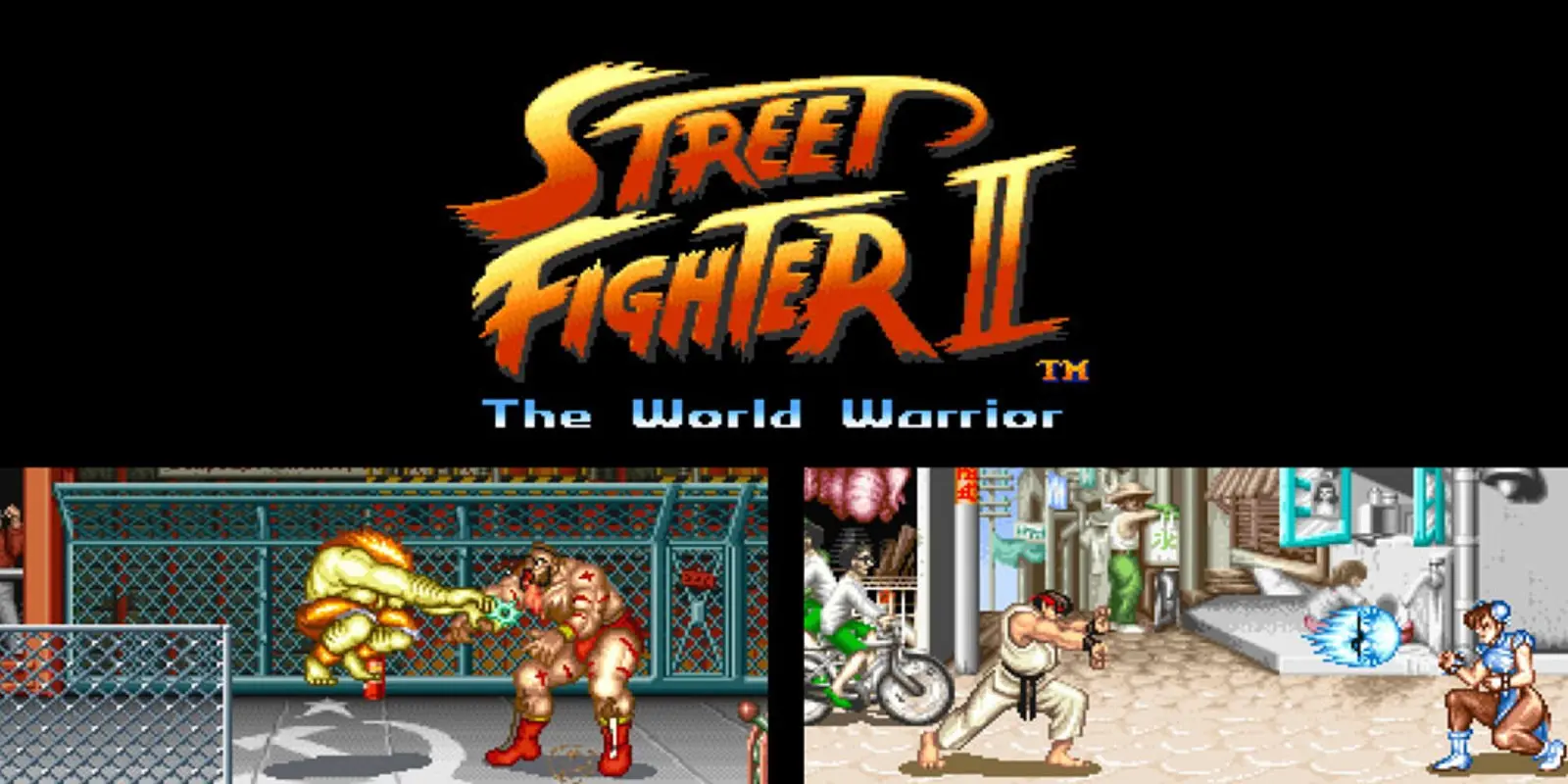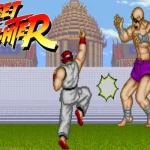Revolutionizing Arcades: How Street Fighter II Defined a Generation
Remember the good old days at the arcade? The smell of rubber joystick grips, the sounds of retro tunes, and the unrelenting anticipation of a friendly fight! ‚Street Fighter II: The World Warrior‘ didn’t just grace us with epic showdowns—it changed the way we gamed forever. Released in 1991, this iconic game is a legend of arcade history, captivating millions with its revolutionary gameplay and competitive flair. Why is it so legendary? Let’s dive in and uncover the secrets, trivia, and evolution of this timeless classic that left arcade-goers spellbound.
The Birth of a Legend: Street Fighter II's Arcade Impact
Ah, Street Fighter II – just saying those words brings back a wave of nostalgia like no other. I remember that first time I laid eyes on the arcade cabinet, all brimming with colorful characters and this electric ambiance. It was 1991, and to be honest, I hadn’t seen anything quite like it before. The local arcade became my second home, a place where quarters turned into dreams and rivalries over Ryu’s Hadouken technique ignited some truly epic showdowns.
Innovative Gameplay: Introduction of Unique Move Sets and Character Abilities
I’ll never forget the first time I accidentally pulled off a Shoryuken. It was like opening the gates to a whole new world of combos and strategies. The characters weren’t just pixels – they had moves that told stories. Chun-Li’s lightning kicks, Guile’s Sonic Boom – these weren’t just moves, they were signatures. The unique move sets were revolutionary, each character demanding its own learning curve and strategy. It felt like you weren’t just playing a game, you were part of an underground fight club. Tips from older players who knew all the moves were like gold nuggets – I jotted them down like they were secret scrolls or something.
Cultural Phenomenon: How It Captured the Zeitgeist of the Early '90s
Street Fighter II didn’t just stay in the arcades. It somehow seeped into everyday life. My buddies and I would swap trading cards and argue over which character was the best during school lunch breaks. The game embodied that early '90s charm, with its vibrant graphics and international cast, resonating with the multicultural background many of us came from. We had no idea the game was helping shape the broader landscape of gaming and pop culture. Street Fighter II was like a badge of coolness – if you played it, you were in the know, part of some secret club that everyone wanted to join.
Player Engagement: The Rise of Competitive Gaming and Local Arcade Battles
Now, if you’ve ever been in an arcade during Street Fighter’s bustling heyday, you’d know that it was never about just button-mashing. Nah, it was survival of the fittest – a gladiator arena of thumb dexterity. I remember standing in those player circles, anxiously waiting my turn, watching seasoned players with hope and a bit of fear. The thrill of defeating a top player was exhilarating, like riding a roller coaster without the safety bar. It made us gamers hungry for more challenges and gave rise to the competitive gaming we see today. Those arcade battles were the stuff of legends, man.
Porting the Phenomenon: Street Fighter II's Journey Across Platforms
Now, taking this arcade jewel and putting it on home systems? Genius idea. We were thirsty for more Street Fighter, and getting it at home was like having Christmas every day.
Amiga and Atari ST: Early Computer Adaptations
The Amiga and Atari ST versions, though not perfect, were a game-changer. I mean, they weren’t quite the arcades – you didn’t have that same weight of the joystick and buttons – but they were close enough. You could practice without judgment, free from the prying eyes of potential challengers. My friend and I would host makeshift tournaments at home, cups of soda in hand and controllers at the ready.
Super Nintendo Entertainment System (SNES): Bringing Arcade to Home
The SNES port? Oh boy, that was the real deal. Practically everyone I knew ran to the stores to grab their copies. It felt like the arcade just slid right into our living rooms. It didn’t just stop at being a fun pastime – it was an exercise in skill and camaraderie, trading tips in the school yard, sharing tactics from ever-expanding game mags. Controls were tight, graphics were spot-on, and it turned couch gaming into epic sleepovers.
PlayStation and Xbox Ports: Enhancing Graphics and Gameplay
By the time Street Fighter II hit the PlayStation and Xbox, I claimed one spot on my couch for life. The consoles elevated Street Fighter with souped-up graphics and sound that brought back that arcade feel with some flair. I played these versions for hours, diving into the online forums to discuss strategies and newfound love for button combos. Online gaming wasn’t just a future wish anymore – it was here.
Nintendo Switch Revival: Modern Adaptations for New Audiences
The Nintendo Switch’s release of Street Fighter II breathed new life into this iconic title, appealing to both old-school fans like myself and a new generation. It took the nostalgia trip up a notch, pairing the classic gameplay and introducing updated features that didn’t feel like a betrayal to the classics. Playing on the go was unreal – who would’ve thought, then, we’d be reliving brawls on portable screens? I guess legends never die, after all.
Glitches and Secrets: Exploring Street Fighter II's Infamous Bugs
Let’s be honest, we all love a good glitch. Street Fighter II had its share, and boy, did those quirks make the game more legendary.
Guile's Pose/Statue: Steps to Recreate the Famous Frozen Moment
Seeing Guile freeze mid-air for the first time was like witnessing minor wizardry. It took a precise execution of moves to get him in that unstirring pose, and when it happened, a mix of shock and laughter would burst from us players. It was like seeing a glitch in the Matrix. Through trial and error, friends and I eventually cracked the code. Pull it off, and your friends think you’re a gaming ninja. Seriously.
Dhalsim's Invisibility Trick: The Mystique of Vanishing Mid-Battle
Remember that time Dhalsim went all Houdini on us? The invisibility glitch was one of those moments that made you question reality. It required some slick timing with his teleport ability – a dash of luck and a sprinkle of skill – to make him poof outta sight. It was the ultimate distraction, and players loved using it to psyche out their opponents. Even when it ended with a less-than-perfect win, we wore that confusion as a badge.
Guile's Handcuffs and Shutdown: Analyzing These Quirky, Yet Notorious Glitches
Guile seemed to be the glitch king with his ‘handcuff’ and ‘shutdown’ moves – quirks that could lock an opponent in place or seize the game entirely. Getting it right was inadvertently hilarious yet annoying, drumming up protests from whoever was unlucky enough to be on the receiving end. It was like an unplanned slapstick skit. History shows those bugs taught us patience and adaptability; roll with the punches or take the victory.
The Evolution and Editions: From World Warrior to Hyper Fighting
The iterations of Street Fighter II were like getting new comic book issues each time, building up the suspense and intrigue. From subtle tweaks to substantial alterations, every edition felt like peeling apart layers of an epic saga.
Champion Edition vs. Unauthorized Kits: The Legal Skirmish Ignited by Capcom
Here’s the tea: for every goldmine, there’s someone looking to hitch a ride. After Champion Edition dropped, unauthorized kits began surfacing with hyper-speed versions that, frankly, made my thumbs regret life choices. Capcom did what they could, jugglin' legal schemes to keep rogue iterations from undermining their work. In a round-about way, it made every new official edition more thrilling – like unlocking forbidden content.
CPS2 System Transition: Introducing 'Super Street Fighter II' Games
The jump to the CPS2 system was like a facelift for the series. With 'Super Street Fighter II', we got rejuvenated graphics, better audio, and added features like super combos that were game-changers. My arcade crew dived into these new updates with gusto, as if stepping into a luxe fortress where possibilities expanded infinitely. The battles got more intense, the rewards sweeter.
Boss Name Changes: Behind-the-Scenes of Mike Bison Becoming Balrog
One day, we’re playing, heads down in the game, and someone asks, “Why did Balrog’s name change?” The backstory on name switches is honestly quite the soap opera – a preemptive move to dodge issues with a famous boxer’s likeness. We chuckled, picturing the office debates behind these changes. Remembering our favorite bosses sometimes got an eyebrow raise from new players, but honestly, that tiny detail never stopped us from dishing out K.Os.
Trivia and Nuggets: Fascinating Facts about Street Fighter II
Street Fighter II is packed with tidbits and Easter eggs, a trove of wonders just waiting for someone to hit you with “Did you know…?”
Official Versions and Their Impact: From World Warrior to Turbo Editions
Boy, the editions list was like a Pokémon roster – from World Warrior to Turbo and beyond, each one stoking fresh excitement and new challenges. Players claimed favorites, swore by Turbo speed or the delicate balance of Hyper Fighting. My collection showed my commitment, compiling cartridges and discs with pride, each version marking a milestone in my playing history.
Yoshiki Okamoto's Influence: The Mastermind Behind the Franchise's Success
The magic behind Street Fighter II wasn’t just luck – a huge shout-out goes to Yoshiki Okamoto, who steered the team toward its iconic glory. Without Okamoto’s vision and push for innovation, Street Fighter might’ve fizzled out among the competition. Learning about the creative minds gave me a newfound appreciation for each pixelated fist thrown and fireball launched.
Cultural Changes: Name Shifts from Japanese Originals
The cultural twists in names, translating the Japanese originals for Western audiences, made the game feel like the secret agent adaptin' identities for various missions. From the regional distinctions to complete alterations, these cultural shifts became part of the gaming folklore. Even now, fans trace the history, piecing together name roots and evolution. It’s a fun linguistic journey that never fails to captivate fans old and new.
And there you have it, folks. This journey down memory lane just reaffirms how Street Fighter II wasn’t just a game; it was a defining moment in gaming history. Whether you’re reminiscing or discovering it for the first time, there’s always something to learn, appreciate, and most definitely play.
Conclusion
From its arcade origins to its numerous ports, 'Street Fighter II' isn't just a game; it’s a legacy that shaped the connections we built, the buttons we mashed, and the friendships we forged at the local arcade. As you reminisce about those epic battles, think about this: could a game ever define a generation more completely? Plug in your favorite console or seek out the nearest arcade, and give 'Street Fighter II' another spin—you might just find yourself rewriting history, one combo at a time!



